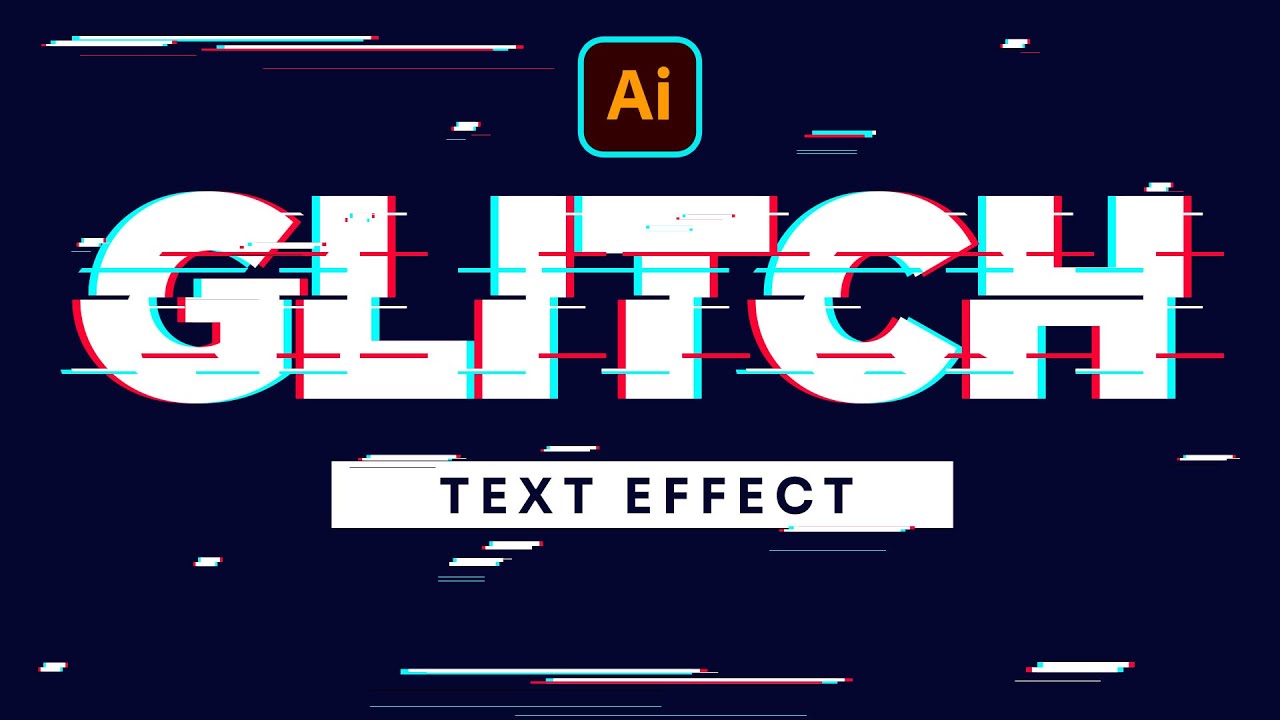
Introduction:
In the realm of digital design, Adobe Illustrator stands as a beacon of creativity, offering a myriad of tools and features to bring artistic visions to life with precision and finesse. Among its vast array of capabilities, the ability to create captivating text effects provides artists and designers with the opportunity to elevate their typography and add visual interest to their designs. Whether you’re a seasoned graphic designer, a typographer, or an aspiring illustrator, understanding how to effectively utilize the tools in Adobe Illustrator to create text effects is essential for unlocking new dimensions of creativity. In this comprehensive guide, we’ll embark on a journey to explore the techniques and tools needed to craft stunning text effects that captivate and inspire.
Chapter 1: Exploring Text Effects in Adobe Illustrator
At its core, Adobe Illustrator offers a wealth of tools and features for creating captivating text effects that range from subtle enhancements to bold transformations. From simple shadows and gradients to intricate textures and 3D effects, the possibilities are endless. By understanding the various techniques and tools available, users can unleash their creativity and transform ordinary text into extraordinary typography that commands attention.
Chapter 2: Getting Started with Text in Adobe Illustrator
Before diving into text effects, it’s important to familiarize yourself with the basics of working with text in Adobe Illustrator. Start by creating a new document or opening an existing one. Then, select the type tool from the toolbar and click on the canvas to create a text box. Type your desired text and use the character panel to adjust settings such as font, size, and spacing. Experiment with different fonts and typography styles to set the foundation for your text effect.
Chapter 3: Adding Basic Text Effects
Once you’ve created your text in Adobe Illustrator, it’s time to add basic effects to enhance its visual impact. Experiment with adding shadows, glows, and outlines to your text using the appearance panel. Use the effects menu to apply transformations such as skewing, rotating, and scaling to create dynamic compositions. Experiment with applying gradients and patterns to your text to add depth and dimension. Play around with opacity and blending modes to create interesting overlays and effects.
Chapter 4: Creating 3D Text Effects
For users looking to take their text effects to the next level, Adobe Illustrator offers a variety of tools and features for creating 3D text effects. Experiment with using the extrude and bevel effect to add depth and dimension to your text. Use the perspective grid tool to create realistic 3D environments for your text to inhabit. Experiment with applying textures and materials to your text to add realism and visual interest. Use the lighting effects filter to add realistic lighting and shadows to your 3D text.
Chapter 5: Adding Texture and Distortion Effects
To add visual interest and personality to your text effects, experiment with adding texture and distortion effects in Adobe Illustrator. Use the warp tool to distort and manipulate the shape of your text. Experiment with applying textures such as grunge, wood, or metal to your text to add depth and character. Use the envelope distort tool to warp and shape your text into interesting forms and patterns. Experiment with combining different texture and distortion effects to create unique and visually compelling typography.
Chapter 6: Incorporating Illustrative Elements
For users looking to create text effects that integrate seamlessly with their illustrations or designs, Adobe Illustrator offers a variety of tools and features for incorporating illustrative elements into text. Experiment with using the pen tool to create custom shapes and paths that interact with your text. Use the blend tool to create smooth transitions between different shapes and elements. Experiment with using clipping masks and opacity masks to create intricate patterns and textures within your text.
Chapter 7: Saving and Exporting Your Text Effects
Once you’ve created your text effects in Adobe Illustrator, it’s important to save and export them for sharing or distribution. Save your Illustrator document in a compatible file format, such as AI or PDF, to preserve the vector properties of your text effects. If you’re creating web-based graphics, consider exporting your text effects as SVG files for scalability and compatibility with web browsers. For print-based projects, export your text effects as high-resolution raster images in formats such as JPEG or PNG.
Conclusion:
Mastering text effects in Adobe Illustrator is a journey of exploration and experimentation, offering endless possibilities for creating typography that captivates and inspires. By understanding the various techniques and tools available, users can unleash their creativity and transform ordinary text into extraordinary typography that commands attention. So grab your stylus, set your sights on the canvas, and let your imagination run wild as you explore the vast world of text effects in Adobe Illustrator.